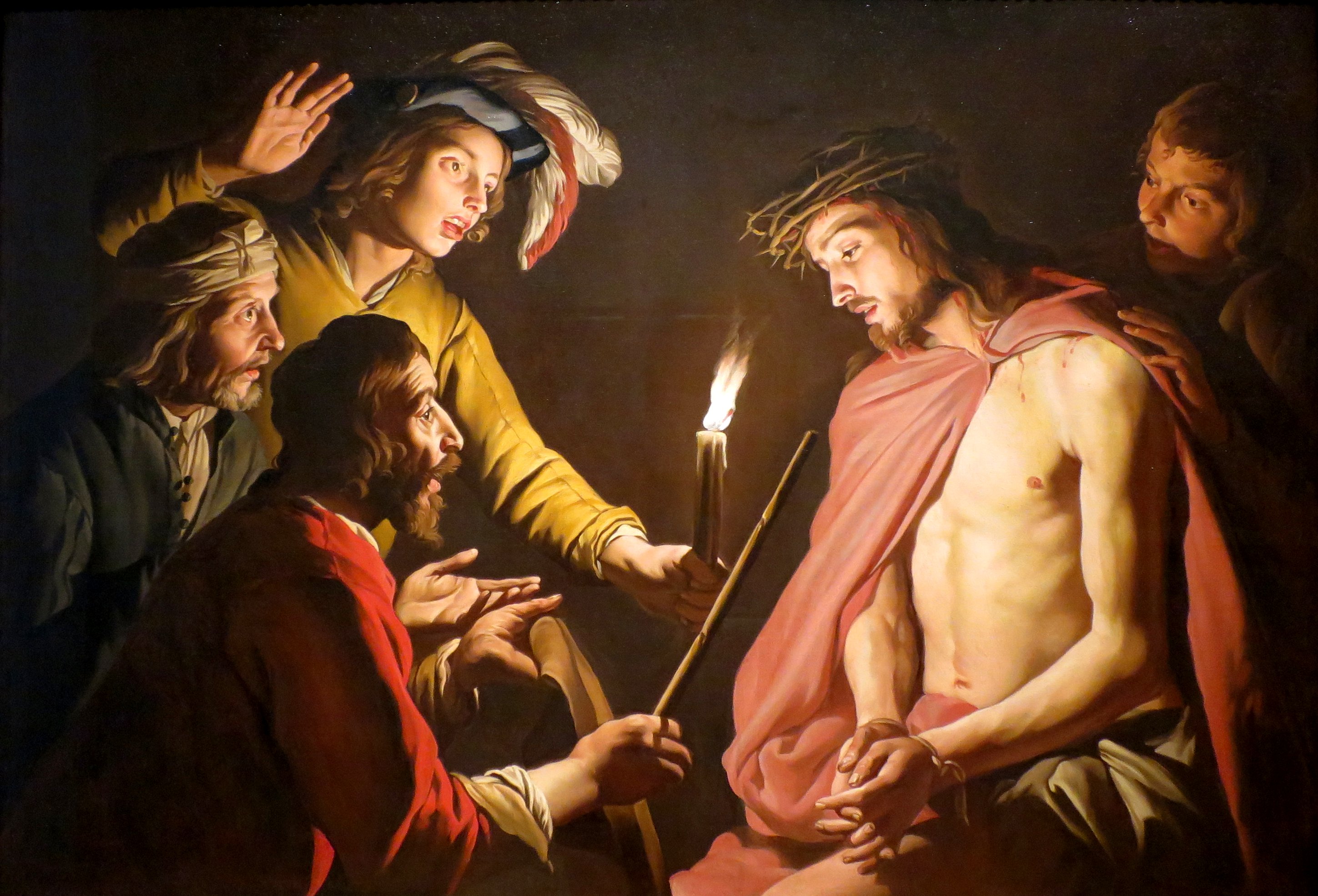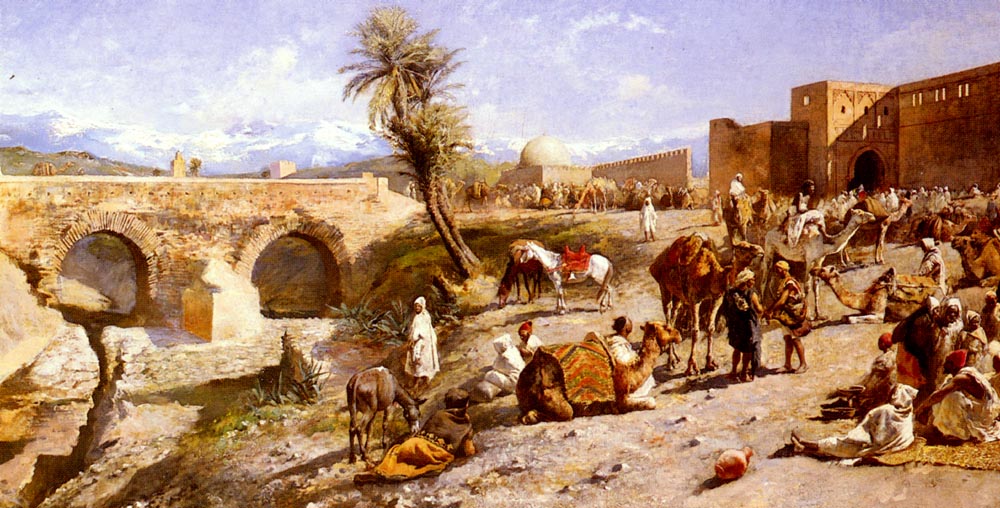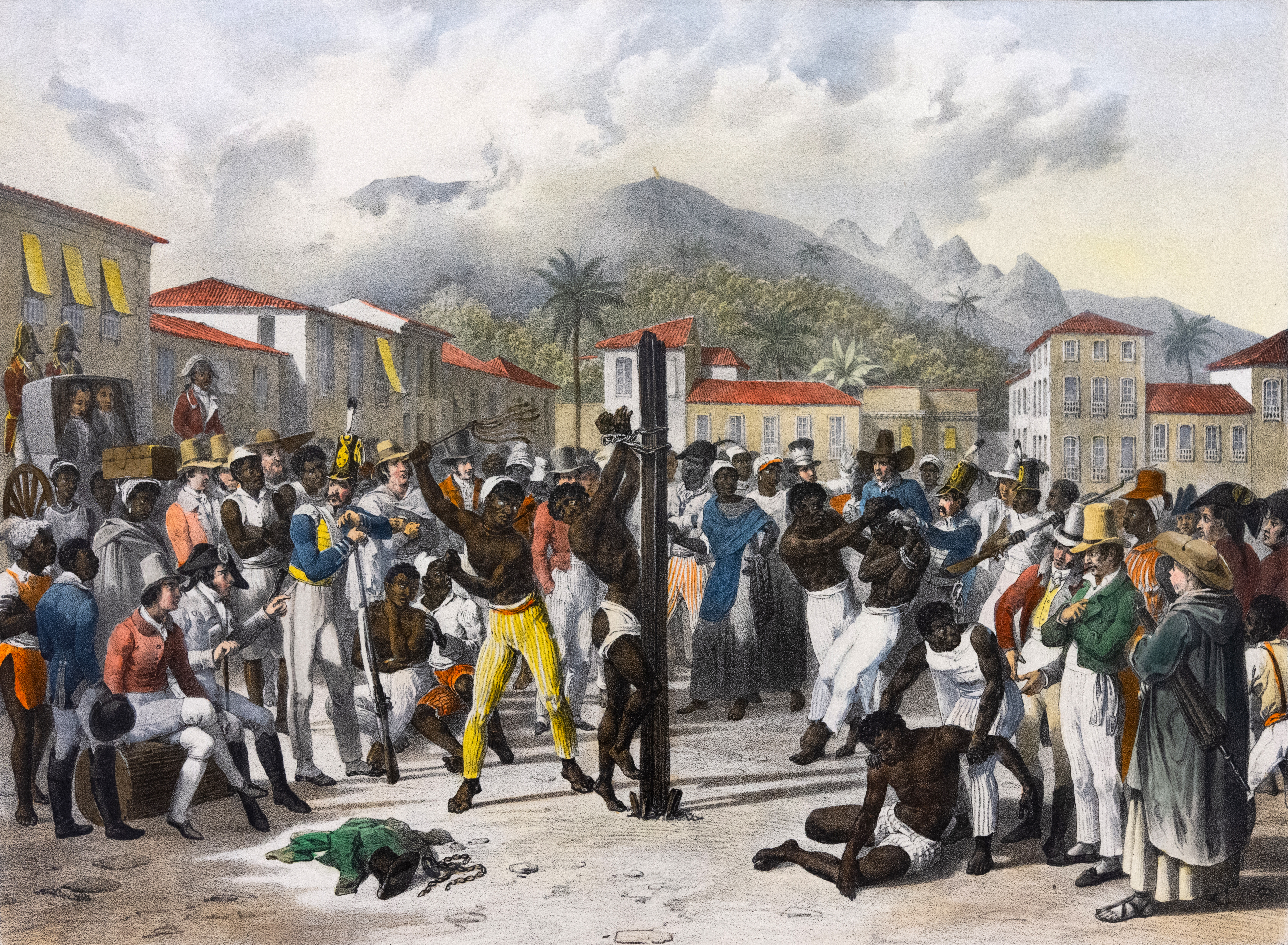|
Penitentes (New Mexico)
''Los Hermanos de la Fraternidad Piadosa de Nuestro Padre Jesús Nazareno'' (Spanish: 'The Brothers of the Pious Fraternity of Our Father Jesus the Nazarene'), also known as ''Los Penitentes'', ''Los Hermanos'', the ''Brotherhood of our Father Jesus of Nazareth'' and the ''Penitente'' Brotherhood is a lay confraternity of Spanish-American Catholic men active in Northern and Central New Mexico and southern Colorado. They maintain religious meeting buildings, which are not formal churches, called '. Membership Although there is great variability regarding candidacy for Brotherhood membership, usually novices come from Penitente families and ideally, only those of known background and conviction are chosen to undergo the initiation. New candidates express their desire for novitiate status by application to the Hermano Mayor, the secretary, or some other official of the ' of intention. After a thorough investigation of the petitioner's life and motives, he receives elaborate instruct ... [...More Info...] [...Related Items...] OR: [Wikipedia] [Google] [Baidu] |
Catholic Church
The Catholic Church, also known as the Roman Catholic Church, is the largest Christian church, with 1.3 billion baptized Catholics worldwide . It is among the world's oldest and largest international institutions, and has played a prominent role in the history and development of Western civilization. O'Collins, p. v (preface). The church consists of 24 ''sui iuris'' churches, including the Latin Church and 23 Eastern Catholic Churches, which comprise almost 3,500 dioceses and eparchies located around the world. The pope, who is the bishop of Rome, is the chief pastor of the church. The bishopric of Rome, known as the Holy See, is the central governing authority of the church. The administrative body of the Holy See, the Roman Curia, has its principal offices in Vatican City, a small enclave of the Italian city of Rome, of which the pope is head of state. The core beliefs of Catholicism are found in the Nicene Creed. The Catholic Church teaches that it ... [...More Info...] [...Related Items...] OR: [Wikipedia] [Google] [Baidu] |
Secular Clergy
In Christianity, the term secular clergy refers to deacons and priests who are not monastics or otherwise members of religious life. A secular priest (sometimes known as a diocesan priest) is a priest who commits themselves to a certain geographical area and is ordained into the service of the citizens of a diocese, a church administrative region. That includes serving the everyday needs of the people in parishes, but their activities are not limited to that of their parish. Etymology and terminology The Latin word referred to a period of time roughly equivalent to 100 years. The English word "century" evolved from this meaning. Latin Christianity adopted the term in Ecclesiastical Latin to refer to matters of an earthly and temporal, as opposed to a heavenly and eternal, nature. In the 12th century, the term came to apply to priests obligated with parochial and ministerial duties rather than the "regular" duties of monastic clergy who were bound to the rule of a religious ... [...More Info...] [...Related Items...] OR: [Wikipedia] [Google] [Baidu] |
Penitente Canyon
Penitente Canyon is located in the San Luis Valley of Colorado Colorado (, other variants) is a state in the Mountain states, Mountain West subregion of the Western United States. It encompasses most of the Southern Rocky Mountains, as well as the northeastern portion of the Colorado Plateau and the wes ..., USA. It was once a refuge for the Penitentes. The area, located on the lands of the Bureau of Land Management, offers rock climbing and a campground. References External links - article * {{authority control Canyons and gorges of Colorado Bureau of Land Management areas in Colorado Protected areas of Saguache County, Colorado Landforms of Saguache County, Colorado ... [...More Info...] [...Related Items...] OR: [Wikipedia] [Google] [Baidu] |
Jean Baptiste Salpointe
Jean-Baptiste Salpointe (February 22, 1825 – July 15, 1898) was the first Bishop of Arizona and the second Archbishop of Santa Fe. Early life and education Salpointe was born in Saint-Maurice-près-Pionsat, Puy-de-Dôme, to Jean and Jeanne (née Mandigon) Salpointe. He received his preparatory education in a school in Agen and studied the classics at the College of Clermont (now Clermont-Ferrand after the fusion of the cities of Clermont and Montferrand). He subsequently studied philosophy and theology in the Theological Seminary of Montferrand. Salpointe was ordained a priest on December 20, 1851, and in 1859 he volunteered to come to the New Mexico Territory as a missionary. Work in southwestern United States In 1860, Salpointe was assigned to the parish in Mora, New Mexico, where he served for six years. The expanse of that parish extended for over 200 miles from north to south. Among his accomplishments at Mora was his success in persuading the Sisters of Loretto and t ... [...More Info...] [...Related Items...] OR: [Wikipedia] [Google] [Baidu] |
Jean Baptiste Lamy
Jean-Baptiste Lamy (October 11, 1814 – February 13, 1888), was a French-American Roman Catholic prelate who served as the first Archbishop of Santa Fe, New Mexico. Willa Cather's novel '' Death Comes for the Archbishop'' is based on his life and career. Early life Lamy was born in Lempdes, Puy-de-Dôme, in the Auvergne region of France, 10 km east of the main regional city of Clermont-Ferrand. He completed his classical studies in the minor seminary at Clermont and theological coursework in the Major seminary at Montferrand, where he was trained by the Sulpician Fathers (Society of Saint-Sulpice). Career He was ordained a priest on December 22, 1838. After a few months as an assistant priest in his native diocese, in 1839 Lamy asked for and obtained permission to answer the call for missionaries of Bishop John Baptist Purcell, of Cincinnati, Ohio. Episcopacy As a missionary in North America, Lamy served at several missions in Ohio and Kentucky when, to his surpris ... [...More Info...] [...Related Items...] OR: [Wikipedia] [Google] [Baidu] |
Roman Catholic Archdiocese Of Santa Fe
The Archdiocese of Santa Fe ( la, Archidioecesis Sanctae Fidei in America Septentrionali, link=no, es, Arquidiócesis de Santa Fe, link=no) is a Latin Church ecclesiastical territory or diocese of the southwestern region of the United States in the state of New Mexico. While the mother church, the Cathedral Basilica of St. Francis of Assisi, is in the city of Santa Fe, its administrative center is in the city of Albuquerque. The Diocese comprises the counties of Rio Arriba, Taos, Colfax, Union, Mora, Harding, Los Alamos, Sandoval, Santa Fe, San Miguel, Quay, Bernalillo, Valencia, Socorro, Torrance, Guadalupe, De Baca, Roosevelt, and Curry. The current archbishop is John Charles Wester, who was installed on June 4, 2015. The Archdiocese announced it would file for bankruptcy protection on November 29, 2018, in the face of dozens of ongoing lawsuits stemming from a sexual abuse scandal that stretches back decades and a new investigation by the state's attorney ... [...More Info...] [...Related Items...] OR: [Wikipedia] [Google] [Baidu] |
Good Friday
Good Friday is a Christian holiday commemorating the crucifixion of Jesus and his death at Calvary. It is observed during Holy Week as part of the Paschal Triduum. It is also known as Holy Friday, Great Friday, Great and Holy Friday (also Holy and Great Friday), and Black Friday. Members of many Christian denominations, including the Catholic, Eastern Orthodox, Lutheran, Anglican, Methodist, Oriental Orthodox, United Protestant and some Reformed traditions (including certain Continental Reformed, Presbyterian and Congregationalist churches), observe Good Friday with fasting and church services. In many Catholic, Lutheran, Anglican and Methodist churches, the Service of the Great Three Hours' Agony is held from noon until 3 pm, the time duration that the Bible records as darkness covering the land to Jesus' sacrificial death on the cross. Communicants of the Moravian Church have a Good Friday tradition of cleaning gravestones in Moravian cemeteries. The date o ... [...More Info...] [...Related Items...] OR: [Wikipedia] [Google] [Baidu] |
Passion (Christianity)
In Christianity, the Passion (from the Latin verb ''patior, passus sum''; "to suffer, bear, endure", from which also "patience, patient", etc.) is the short final period in the life of Jesus Christ. Depending on one's views, the "Passion" may include, among other events, Jesus' triumphal entry into Jerusalem, his cleansing of the Temple, his anointing, the Last Supper, Jesus' agony in the Garden, his arrest, his Sanhedrin trial, his trial before Pontius Pilate, his crucifixion and his death on Good Friday, his burial, and the resurrection of Jesus. Those parts of the four canonical Gospels that describe these events are known as the "Passion narratives". In some Christian communities, commemoration of the Passion also includes remembrance of the sorrow of Mary, the mother of Jesus, on the Friday of Sorrows. The word ''passion'' has taken on a more general application and now may also apply to accounts of the suffering and death of Christian martyrs, sometimes using the ... [...More Info...] [...Related Items...] OR: [Wikipedia] [Google] [Baidu] |
Holy Week
Holy Week ( la, Hebdomada Sancta or , ; grc, Ἁγία καὶ Μεγάλη Ἑβδομάς, translit=Hagia kai Megale Hebdomas, lit=Holy and Great Week) is the most sacred week in the liturgical year in Christianity. In Eastern Churches, which includes Eastern Orthodox, Eastern Catholic and Eastern Lutheran traditions, Holy Week occurs the week after Lazarus Saturday and starts on the evening of Palm Sunday. In the denominations of the Western Christianity, which includes the Roman Catholicism, Lutheranism, Moravianism, Anglicanism, Methodism and Reformed Christianity, it begins with Palm Sunday and concludes on Easter Sunday. For all Christian traditions it is a Moveable feast, moveable observance. In Eastern Rite Churches, Holy Week starts after 40 days of Lent and two transitional days, namely Saturday of Lazarus (Lazarus Saturday) and Palm Sunday. In the Western Christian Churches, Holy Week falls on the last week of Lent or Sixth Lent Week. Holy Week begins with the com ... [...More Info...] [...Related Items...] OR: [Wikipedia] [Google] [Baidu] |
Procession
A procession is an organized body of people walking in a formal or ceremonial manner. History Processions have in all peoples and at all times been a natural form of public celebration, as forming an orderly and impressive ceremony. Religious and triumphal processions are abundantly illustrated by ancient monuments, e.g. the religious processions of Egypt, those illustrated by the rock-carvings of Boghaz-Keui, the many representations of processions in Greek art, culminating in the great Panathenaic procession of the Parthenon Frieze, and Roman triumphal reliefs, such as those of the arch of Titus. Greco-Roman practice Processions played a prominent part in the great festivals of Greece, where they were always religious in character. The games were either opened or accompanied by more or less elaborate processions and sacrifices, while processions from the earliest times formed part of the worship of the old nature gods, as those connected with the cult of Dionysus and the ... [...More Info...] [...Related Items...] OR: [Wikipedia] [Google] [Baidu] |
Lent
Lent ( la, Quadragesima, 'Fortieth') is a solemn religious observance in the liturgical calendar commemorating the 40 days Jesus spent fasting in the desert and enduring temptation by Satan, according to the Gospels of Matthew, Mark and Luke, before beginning his public ministry. Lent is observed in the Anglican, Eastern Orthodox, Lutheran, Methodist, Moravian, Oriental Orthodox, Persian, United Protestant and Roman Catholic traditions. Some Anabaptist, Baptist, Reformed (including certain Continental Reformed, Presbyterian and Congregationalist churches), and nondenominational Christian churches also observe Lent, although many churches in these traditions do not. Which days are enumerated as being part of Lent differs between denominations (see below), although in all of them Lent is described as lasting for a total duration of 40 days. In Lent-observing Western Churches, Lent begins on Ash Wednesday and ends approximately six weeks later; depending on the Chri ... [...More Info...] [...Related Items...] OR: [Wikipedia] [Google] [Baidu] |
Flagellation
Flagellation (Latin , 'whip'), flogging or whipping is the act of beating the human body with special implements such as whips, rods, switches, the cat o' nine tails, the sjambok, the knout, etc. Typically, flogging has been imposed on an unwilling subject as a punishment; however, it can also be submitted to willingly and even done by oneself in sadomasochistic or religious contexts. The strokes are typically aimed at the unclothed back of a person, though they can be administered to other areas of the body. For a moderated subform of flagellation, described as ''bastinado'', the soles of a person's bare feet are used as a target for beating (see foot whipping). In some circumstances the word ''flogging'' is used loosely to include any sort of corporal punishment, including birching and caning. However, in British legal terminology, a distinction was drawn (and still is, in one or two colonial territories) between ''flogging'' (with a cat o' nine tails) and ''wh ... [...More Info...] [...Related Items...] OR: [Wikipedia] [Google] [Baidu] |
.jpg)







